Opinion
An object lesson in archaeological conservation

By ROHANA R. WASALA
“Buvaneka Hotel? I wanted to renovate the place when I was Secretary to the Urban Development Authority, but the owner refused to give it up for renovation.”
– An amused President Gotabaya Rajapaksa to some young men who asked him, during his campaign tour of the Kurunegala district on July 27, why he kept silent when ‘our kingdom’ was bulldozed.
The demolition of a part of a building that is claimed to be an archaeological site at Kurunegala on the night of July 14, 2020 caused quite a furore, with the opposition seizing the opportunity offered by the surreptitious operation to sling mud at the government. Why the mayor had to do it in the night in such a hurry is yet to be explained, though. In any case, the controversy ignited manna from heaven for the opposition, which is starved of a proper platform for fighting the election. Aside from this, the main opposition speakers are providing much needed comic relief for the corona-fears-hit audiences across the country through their empty campaign speeches. They have suddenly become champion protectors of the country’s cultural heritage. But it is hardly likely that the senior SLPP leaders would have allowed this act of (apparently accidental) vandalism to be committed, had they had an inkling of it beforehand, particularly in this run-up-to one of the most decisive general elections held in the country.
Be that as it may, the episode has drawn the attention of all Sri Lankans to a chronic issue that is directly connected with the national security and the political stability of the Sri Lankan state: The deliberate destruction/vandalizing/encroachment of Sri Lanka’s archaeological sites by treasure hunters and politically motivated individuals. The protection, through preservation and conservation, of the country’s rich ancient cultural heritage is a national responsibility that no government can ignore. There are six main parties who are bound to take an interest in this issue; they are, to list them at random: Buddhist monks, the general public, historians and archaeologists, relevant state officials, politicians in general, and the government including the prime minister and the executive president.
The president laughed when the young men queried him about the Kurunegala affair because he knew that the name ‘Buvaneka’ had been dragged into it by interested parties to embarrass the government (by highlighting its supposed antiquity). With that answer, he pricked the balloon of false propaganda of the opposition. But there is no doubt that he takes the problem that underlies the whole affair seriously. It is very clear that, taken out of that context, it is no laughing matter, though some people may try to make it out to be something trivial and funny. In fact, the enemies of the country want to represent even the general election as a form of meaningless theatrical entertainment, which in reality this time is the moment of truth for the whole national electorate.
Incidentally, there are those who are ever ready to attack the recorded history of the Sinhalese in their unique homeland as mere fiction. But knowledgeable local and foreign scholars, from colonial times to the present, have increasingly accepted it as something well authenticated by carefully composed ancient chronicles and orally transmitted folk traditions, both supported by epigraphical evidence and archaeological remains found across the length and breadth of the island. Ill-informed cynics are making the public outrage caused by the thoughtless act a pretext for taking a playful dig at those who are speaking up for safeguarding the rights of the variously besieged majority community. It is a different matter that there are a few political opportunists, fakes, and rogues among them as there are among members of other communities. Recent evidence unearthed by archaeologists (some of them from foreign universities) has proved that a primitive people, who had nevertheless reached a relatively advanced stage of civilization, had inhabited the central mountainous region of the island at least some four and a half thousand years ago, which hints at the fact that the history of the Sinhalese is much older than the recorded 2500 years. The Ravana story may be a myth, but it is quite possible that it is based on a regal ancestor of the Sinhalese who fought invasions from abroad, thousands years before the time that the Mahavamsa began. Some amateur ‘archaeologists’ in the form of YouTubers, apparently none of them with any expertise in the most difficult domain of archaeology, at various levels of commitment to the discovery of the scientific truth from one hundred percent to zero percent, are turning out videos these days about real or imagined archaeological sites. Some of them have published, for example, pictures of mysterious symbolic shapes carved on a rock in a hardly accessible place, and a drawing of what looks like a dinosaur on another rock face; images worthy of being included in Erich Von Daniken’s 1968 classic ‘Chariots of the Gods’. A responsible future government must turn its attention to this so-called ‘Ravana’ aspect of Sri Lanka’s pre-history and bring it under the purview of proper archaeological study. The nation can exploit its potential for the benefit of the country in terms of its economy through the promotion of tourism, in addition to contributing to the global store of human knowledge. Equally important, it will serve to ensure the future survival of the Sinhalese as a race with their unique historical identity. So, the uproar raised about the Kurunegala incident, by both genuine and mischief-making protestors, is not something to be dismissed with a laugh.
There cannot be any dispute about the fact that the structure at the place in question is of archaeological value, though the mayor of Kurunegala, the first citizen of the city, is unaware of it. Ignorance is no excuse for a person who holds such a responsible position. However, the Adhikarana Sanga Nayake Thera of Vayamba, at a meeting of the Bauddha Upadeshaka Sabhava with the President (July 25) said that the place in question was not an archaeological site, and that it was a big lie to say that it was. He said that there was no ‘raja sabha mandapaya’ (a royal assembly hall) belonging to king Bhuvanekabahu II at that place. In his detailed explanation of its recent history of about twenty years, he described how the premises was leased out by the municipal council during that period and was enlarged and used for various commercial purposes such as running a wine shop,a restaurant, a barber shop, and even for renting out rooms for couples. It was implied that the enlargement of the building by adding rooms, etc was done without proper official authorization. But the monk admitted that the old structure that originally stood there, and apparently still stands there partly damaged or tampered with, was one built more than one hundred years ago, which means that the place should be considered an archaeological site. An archaeologist who was seen at the meeting, had stated to a local newspaper on an earlier occasion, that, according to popular tradition, the particular place was where king Bhuvanekabahu II held assizes/adjudged cases (though there was no literary or other evidence to support this.)
With apologies to historians and archaeologists, I would like to suggest, as a lay reader, that unrelated information available in Chapter XC (90) of the Mahavansa (continued in the Culavansa) lends credence to the popular tradition that the archaeologist monk mentioned. That particular chapter narrates the goings on in a period of history made noteworthy by such events as the relocation of the seat of government from time to time to Dambadeniya, Kurunegala, and Yapahuwa, internecine conflicts triggered by succession disputes sometimes leading to torture, treachery and murder, foreign invasions, the forced removal of the Tooth Relic to the captivity of Pandyans in south India by ‘a chief among Tamils, known as Ariya Cakkavatti, albeit he was not an Ariya’, and its eventual recovery through sophisticated diplomacy, cultural activity in the service of Buddhism and the advancement of letters under royal patronage, and the construction of architectural monuments such as the magnificent rock fortress city of Yapahuwa (Subha-pabbata/Subhacala/Subagiri) built by king Bhuvanekabahu I, whose son Bhuvanekabahu II ruled at Kurunegala from 1293-1302 CE. That the latter dispensed justice from a specially constructed assembly hall in Kurunegala is not an improbability. Has any archaeologist tried to compare the architectural features of the alleged royal assembly hall to those found at Yapahuwa? In view of these facts, talking further about the issue is worth our while. (The Mahavansa references here are based on Mudaliyar L.C. Wijesinha’s translation of 1889.)
The issue involves the accidental or premeditated partial destruction of a heritage building and its complex aftermath. The foreign and local supporters of the opposition may not see any complexity in either, the former because of their ignorance of, and the latter because of their indifference to, the cultural sensitivities and political perceptions of the majority Sinhalese Buddhist community. Hence they might express adverse opinions about the way the six categories of people responded to the incident.
It is obvious that the mayor found himself caught off his guard when he was confronted with the fact that what was partly demolished was of archaeological value. A minister of the present government, a prominent member of the SLPP (who comes from a business background, and who was a UNP stalwart before he joined the Mahinda camp), rushed to his rescue, which one of his cabinet colleagues publicly criticised. If some irregularity was committed in this instance, which is very likely, there is a common heritage of guilt to be shared by the incumbent and previous mayors, possibly of a different political colour. Prime minister Mahinda Rajapaksa, it seemed, showed a special interest in the matter as the Buddha Sasana and Cultural Affairs minister in the caretaker administration. The opposition’s exploitation of the mayor’s blunder to attack the government to gain some propaganda advantage over it, with the elections round the corner, made the PM’s concern in this regard look like a mark of what they probably thought was his desire to engage in some sort of damage control exercise. In my opinion, there was absolutely no need for the government to register a panicked response. What happened was what could have happened under any government, notwithstanding its desire to avoid such embarrassment or to ensure rectification of what went wrong in such a situation. The commercial abuse of that place, and many other similar registered and unregistered heritage sites, for that matter, has persisted for a long time, in some cases, with the connivance of or under the sponsorship of politicians in the local authorities allied to main parties. Party leaders have no control over this. In politically motivated attacks on the country’s ancient Buddhist heritage in the east particularly, government officials become vulnerable to manipulation by well funded extremists through bribery.
The only solution is to leave matters to the law enforcement authorities so they can take appropriate action. The PM-appointed committee has made some recommendations (conservation of the part damaged while preserving its archaeological features, acquisition of the building by the Department of Archaeology, requesting the RDA to revise its road widening plan at this point, prosecuting the persons responsible for the destruction, and recovering the cost of conservation from the institutions or individuals responsible for the destruction) which are to be implemented in the short term. Once the building is restored and the problem, whatever it is, that required a part of it to be bulldozed under cover of the night is sorted out, the current mode of its utilization will have to be reviewed, and changes introduced as appropriate. At the meeting he had with the monks of the Bauddha Upadeshaka Sabhava on July 25, the President decided to appoint a committee of experts to propose changes to the Antiquities Ordinance, which should ensure more robust implementation of the law relating to archaeological places, buildings and objects than now.
Even in the past, the President was the only person in a position of power (as defence secretary) who made a meaningful intervention in the problem first articulated by Buddhist monks (for example, Kuragala). Meanwhile, it will be very important to depoliticize and de-communalize the problem of protecting the archaeological relics of the country’s glorious Buddhist past. Most of the vulnerable sites lie in the north and east, where the island civilization started as currently understood. Actually there is no threat to them from the mainstream Tamil and Muslim minority communities who respectively dominate those provinces in terms of population numbers, but these peaceful people are held hostage by a few political extremists (separatists and jihadists). Tamils and Muslims are not confined to these two provinces. More than 50% of them live in the south among the Sinhalese. The protection of archaeological sites has become a political and communal issue, particularly in the north and east, because of the extremists. The government must enlist the support of ordinary Tamils and Muslims in these areas to overcome the extremists, and then entrust the protection of the archaeological sites to people of all three communities who live there, in addition to ensuring state protection of the same. Places already encroached upon must be re-acquired by the state, and people already settled on them gradually relocated elsewhere, with the least inconvenience to them.
These archaeological treasures belong equally to all present day Sri Lankans irrespective of ethnicity. In economic terms, the existence of ancient historical places and objects is beneficial to the people who today inhabit the relevant areas, because they are tourist attractions. Most people are ignorant of the value of these relics of the past. Popular ignorance facilitates the extremists’ anti-national activities. One of the lessons taught by the Kurunegala episode is about the importance of adequate awareness on the part of the officialdom, as well as the populace, regarding the country’s inestimable archaeological treasures.
Opinion
When crisis comes to classroom:

How Sri Lankan children face natural disasters and economic problems
Sri Lanka has always found ways to survive storms. But during the past ten years, the storms have come more often and with more force. Floods have swallowed villages, landslides have buried homes, droughts have dried wells, and cyclones have pushed families out of their coastal towns. Then came the economic crisis in 2022 and 2023, which felt like an invisible disaster happening quietly inside every home. In the middle of all this were our schoolchildren. Their names rarely appeared in newspapers. Many of their stories were never told. A new study brings these voices together and shows how overlapping crises have reshaped education across the island. It also reveals something important: not all children suffered the same way.
This article tells that story through the experiences of teachers, parents and children. It also explains why some regions, some ethnic communities and some families struggled much more than others.
A decade of disruption
Over the past decade, Sri Lanka’s school system has been hit again and again. Floods in Ratnapura, Kalutara and Galle have become almost yearly events. Landslides in Badulla and Nuwara Eliya have cut off whole communities. Cyclones in Batticaloa and Ampara have damaged classrooms and left children in fear. Long droughts in the North and East have forced families to live with empty wells.
Then the economic crisis arrived. It brought fuel shortages, food shortages, transport problems, high prices and a heavy sense of uncertainty. Teachers stood in long queues just to buy a few litres of petrol. Parents struggled to buy exercise books. School buses stopped running. Many children stayed home. A school principal from the hill country said he could not remember a single year without crisis. “One month we have floods. The next month we have landslides,” he said. “The children keep losing learning time.” These experiences echo earlier concerns raised by Angela Little (2003) and Harsha Aturupane (2014), who showed that rural, estate and conflict-affected areas have always faced extra barriers. The new study suggests that recent disasters have made those old inequalities even wider.
When geography decides a child’s future
Sri Lanka is small, but the risks children face depend heavily on where they live. In the flood-prone river areas, schools often close for long periods. Many become temporary shelters filled with families, mats, cooking pots and clothing. Teachers say it can take weeks to clean and reopen classrooms. In the estate sector, children live high in the hills. When a landslide blocks a single narrow road, school simply stops. A teacher in Badulla said she once walked six kilometres during landslide season just to reach her students. “Some days I held on to tree roots to climb,” she said with a tired smile.
In cyclone-prone districts like Batticaloa and Ampara, fear becomes part of childhood. When the wind changes, parents start to worry. School roofs fly off. Books get soaked. Homes crumble. Recovery takes time, and many families cannot afford repairs.
In the drought-hit North and East, children sometimes miss school because they must help their mothers collect water. Teachers say these children return dusty, tired and unable to focus. Lalith Perera (2015) showed how geospatial tools can identify the highest-risk schools. The new study supports his findings and shows that children in these areas lose far more learning days than children in urban schools.
Ethnicity adds another layer to the struggle
Sri Lanka’s ethnic geography shapes children’s lives in deep ways. Tamil families in the North and East still face the long shadow of war-related poverty and lack of resources, as described by Shanmugaratnam (2015) and Samarasinghe (2020). Many schools in these areas are old, understaffed and in poor condition. When a cyclone or drought hits, recovery becomes slow and difficult. A teacher in Mullaitivu said her classroom lost its roof during a storm. “The children sat under a tree for weeks,” she recalled. “They still came. They did not want to fall behind.”
Muslim communities along the Eastern coast face frequent displacement during cyclonic seasons. When fishing families lose their boats and nets, income disappears. Children often miss school because parents cannot afford uniforms or bus fares.
Estate Tamil communities, studied earlier by Little and Jayaweera, continue to face long-term marginalisation. Many children rely heavily on school meal programmes. When the economic crisis disrupted these meals, teachers saw hunger more clearly than ever. Some children fainted in class.
In all these communities, ethnicity and geography combine to create layers of disadvantage that are hard to escape.
The economic crisis: A silent blow to education
The economic crisis of 2022–2023 affected every Sri Lankan home, but its impact was especially hard on low-income families. Economists like Nisha Arunatilake (2022) and Ramani Gunatilaka (2022) have shown how inflation and job losses pushed households into deep stress. These pressures directly affected children’s education.
With no fuel, many teachers could not travel. They walked long distances or hitchhiked. In some schools, several classes were combined because only a few teachers could come. School supplies became expensive. Parents reused old books or bought cheap, low-quality paper. Uniforms were patched many times. Some children wore slippers because shoes were too costly. Food shortages made everything worse. With rising prices, families reduced meals. In the estate sector, teachers saw hunger growing. Attendance fell.
Gender roles also shifted. Girls in rural areas took on childcare and cooking while parents worked longer hours. Boys were pushed into temporary labour. A mother in Monaragala said her teenage son cut timber to support the family. “He comes home exhausted,” she said. “How can he study after that?” Earlier, Selvy Jayaweera (2014) warned that crises deepen gender inequalities. The new study shows that her warning has come true again.
Schools tried to cope, but not all were ready
During field visits, researchers met principals who showed remarkable leadership. Some created disaster committees, organised awareness programmes and kept strong communication with parents. These schools recovered fast. Communities helped clean classrooms. Teachers volunteered for extra lessons. But many schools struggled. Some had no emergency plans. Others had old buildings damaged from past disasters. Some principals lacked training in crisis response. A few schools did not even have complete first aid boxes.
The difference between prepared and unprepared schools became painfully clear. After a cyclone in Batticaloa, one school restarted within a week. A nearby school stayed closed for nearly a month because debris and broken furniture filled the classrooms. Resilience expert Rajib Shaw (2012) highlighted the importance of strong partnerships between schools and communities. This study confirms that his message still holds true.
Families found ways to cope, but children paid the price
Every Sri Lankan family has its own survival strategies. Some borrow money. Some rely on relatives abroad. Some work extra hours. Some move to other districts. But these strategies often disrupt children’s schooling. When a father leaves home for work in another district, children lose emotional support. When a mother works late at a tea estate, older daughters must care for younger siblings. When a family moves temporarily, children lose teachers, routines and friends. A father in Ratnapura said he felt torn. “I want my daughter to study,” he said. “But how can I think of school when the river rises every year and we lose everything?” Years ago, sociologist K. T. Silva (2010) wrote about how poverty and displacement interrupt education. The new study shows that these patterns continue today.
How crises make old inequalities worse
One strong message from the study is that disasters do not create inequality they deepen what already exists. Rural schools with fewer resources suffer greater damage. Estate children who already face hunger become even more vulnerable. Tamil and Muslim families in hazard-prone areas must deal with both environmental and historical burdens.
Climate disasters also come in cycles. One flood does not end the struggle. Children who lose one month of school every year slowly fall behind. Their confidence drops. Their chances of continuing to higher education shrink. Meanwhile, well-resourced urban schools recover quickly. They have strong buildings, better communication and supportive parents. Their losses are small and temporary. The gap between privileged and vulnerable children grows wider each year.
What Sri Lanka can do now
Sri Lanka stands at a turning point. Climate change will bring more storms and droughts. The economy is still fragile. Schools must be prepared.
Every school needs a clear emergency plan. Preparedness should be part of daily school life safer buildings, evacuation routes, first aid training, and strong communication networks. Vulnerable regions need extra support. Flood-prone river basins, cyclone-hit coasts, drought-affected northern districts and the estate sector require more funding and attention. School meals must be protected. For many children, this meal is the difference between hunger and hope.
Teachers need help with transport and crisis training. Families need social protection so children are not forced into labour or long absences. Most importantly, education policy must place fairness at the centre. As Aturupane (2014) explained, equality cannot be achieved by giving all schools the same amount. Some schools need more because their burdens are heavier.
Stories that should guide policy
The most powerful part of this research is not the statistics. It is the stories:
A boy in Ratnapura losing his schoolbag to the floods.A teacher in Badulla walking through mud for her students.A mother in Batticaloa cooking in a cyclone shelter.A girl in Mullaitivu studying under a tree after her classroom roof blew away.A Muslim family in Ampara sheltering in a mosque during every storm.A Tamil child in Kilinochchi missing school to fetch water during drought.
These are the voices policymakers must listen to.
A future that values every child
Sri Lanka’s future depends on the minds of its children. If classrooms become unstable places, the country’s future becomes uncertain. But there is hope. Many teachers showed deep dedication. Many parents worked tirelessly to keep their children in school. Many communities showed unity and strength. If the government builds on this resilience through better planning, fairer funding and stronger support for vulnerable regions children’s dreams can survive the storms ahead. What we choose today will decide whether the next generation inherits disaster or opportunity.
References
Aturupane, H. (2014). Equity and Access in Sri Lankan Education. World Bank.Arunatilake, N. (2022). Economic Vulnerability and Social Protection in Times of Crisis. Institute of Policy Studies.Fernando, P. (2018). Household Vulnerability and Educational Participation in Rural Sri Lanka. SAGE Publications.Gunatilaka, R. (2022). The Impact of Economic Shocks on Sri Lankan Households. International Labour Organization.Jayaweera, S. (2014). Gender Dimensions of Educational Inequality in Sri Lanka. Centre for Women’s Research.Little, A. W. (2003). Education, Conflict and Social Cohesion in Sri Lanka. UNESCO.Perera, L. (2015). Geospatial Approaches to Educational Planning in Disaster-Prone Regions. Asian Development Bank.Samarasinghe, V. (2020). Regional Inequalities and Social Exclusion in Sri Lanka. Routledge.Shanmugaratnam, N. (2015). Post-War Development and Marginalisation in Northern Sri Lanka. Nordic Asia Press.Shaw, R. (2012). Community-Based Disaster Risk Reduction and School Resilience. Earthscan.Silva, K. T. (2010). Poverty, Displacement, and Educational Access in Sri Lanka. Social Scientists’ Association.UNICEF Sri Lanka. (2018). School Safety and Disaster Preparedness in Sri Lanka.
Opinion
The policy of Sinhala Only and downgrading of English
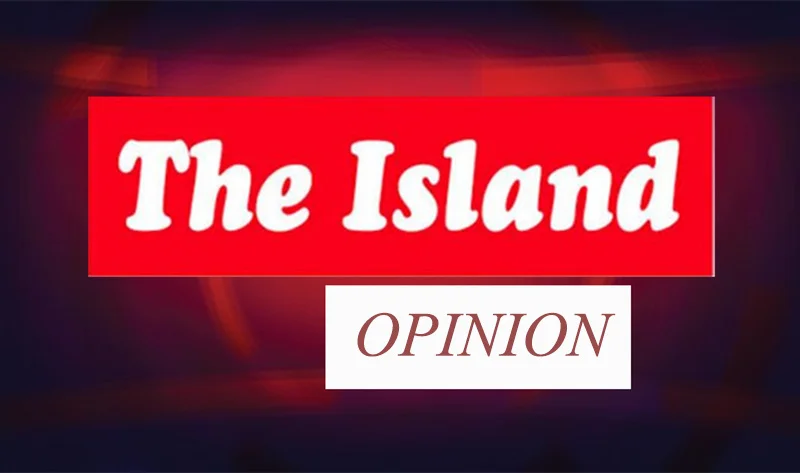
In 1956 a Sri Lankan politician riding a great surge of populism, made a move that, at a stroke, disabled a functioning civil society operating in the English language medium in Sri Lanka. He had thrown the baby out with the bathwater.
It was done to huge, ecstatic public joy and applause at the time but in truth, this action had serious ramifications for the country, the effects have, no doubt, been endlessly mulled over ever since.
However, there is one effect/ aspect that cannot be easily dismissed – the use of legal English of an exact technical quality used for dispensing Jurisprudence (certainty and rational thought). These court certified decisions engendered confidence in law, investment and business not only here but most importantly, among the international business community.
Well qualified, rational men, Judges, thought rationally and impartially through all the aspects of a case in Law brought before them. They were expert in the use of this specialised English, with all its meanings and technicalities – but now, a type of concise English hardly understandable to the casual layman who may casually look through some court proceedings of yesteryear.
They made clear and precise rulings on matters of Sri Lankan Law. These were guiding principles for administrative practice. This body of case law knowledge has been built up over the years before Independence. This was in fact, something extremely valuable for business and everyday life. It brought confidence and trust – essential for conducting business.
English had been developed into a precise tool for analysing and understanding a problem, a matter, or a transaction. Words can have specific meanings, they were not, merely, the play- thing of those producing “fake news”. English words as used at that time, had meaning – they carried weight and meaning – the weight of the law!
Now many progressive countries around the world are embracing English for good economic and cultural reasons, but in complete contrast little Sri Lanka has gone into reverse!
A minority of the Sinhalese population, (the educated ones!) could immediately see at the time the problems that could arise by this move to down-grade English including its high-quality legal determinations. Unfortunately, seemingly, with the downgrading of English came a downgrading of the quality of inter- personal transactions.
A second failure was the failure to improve the “have nots” of the villagers by education. Knowledge and information can be considered a universal right. Leonard Woolf’s book “A village in the Jungle” makes use of this difference in education to prove a point. It makes infinitely good politics to reduce this education gap by education policies that rectify this important disadvantage normal people of Sri Lanka have.
But the yearning of educators to upgrade the education system as a whole, still remains a distant goal. Advanced English spoken language is encouraged individually but not at a state level. It has become an orphaned child. It is the elites that can read the standard classics such as Treasure Island or Sherlock Holmes and enjoy them.
But, perhaps now, with the country in the doldrums, more people will come to reflect on these failures of foresight and policy implementation. Isn’t the doldrums all the proof you need?
by Priyantha Hettige
Opinion
GOODBYE, DEAR SIR
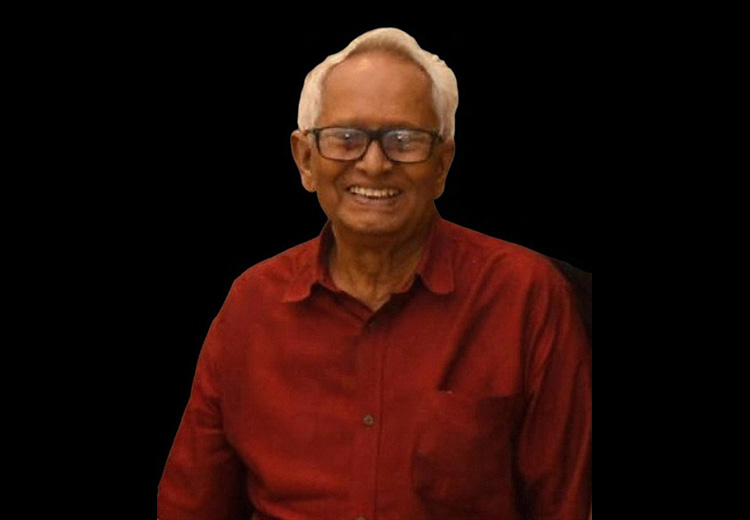
It is with deep gratitude and profound sorrow that we remember Mr. K. L. F. Wijedasa, remarkable athletics coach whose influence reached far beyond the track. He passed away on November 4, exactly six months after his 93rd birthday, having led an exemplary and disciplined life that enabled him to enjoy such a long and meaningful innings. To those he trained, he was not only a masterful coach but a mentor, a friend, a steady father figure, and an enduring source of inspiration. His wisdom, kindness, and unwavering belief in every young athlete shaped countless lives, leaving a legacy that will continue to echo in the hearts of all who were fortunate enough to be guided by him.
I was privileged to be one of the many athletes who trained under his watchful eye from the time Mr. Wijedasa began his close association with Royal College in 1974. He was largely responsible for the golden era of athletics at Royal College from 1973 to 1980. In all but one of those years, Royal swept the board at all the leading Track & Field Championships — from the Senior and Junior Tarbat Shields to the Daily News Trophy Relay Carnival. Not only did the school dominate competitions, but it also produced star-class athletes such as sprinter Royce Koelmeyer; sprint and long & triple jump champions Godfrey Fernando and Ravi Waidyalankara; high jumper and pole vaulter Cletus Dep; Olympic 400m runner Chrisantha Ferdinando; sprinters Roshan Fernando and the Indraratne twins, Asela and Athula; and record-breaking high jumper Dr. Dharshana Wijegunasinghe, to name just a few.
Royal had won the Senior & Junior Tarbats as well as the Relay Carnival in 1973 by a whisker and was looking for a top-class coach to mould an exceptionally talented group of athletes for 1974 and beyond. This was when Mr. Wijedasa entered the scene, beginning a lifelong relationship with the athletes of Royal College from 1974 to 1987. He received excellent support from the then Principal, late Mr. L. D. H. Pieris; Vice Principal, late Mr. E. C. Gunesekera; and Masters-in-Charge Mr. Dharmasena, Mr. M. D. R. Senanayake, and Mr. V. A. B. Samarakone, with whom he maintained a strong and respectful rapport throughout his tenure.
An old boy of several schools — beginning at Kandegoda Sinhala Mixed School in his hometown, moving on to Dharmasoka Vidyalaya, Ambalangoda, Moratu Vidyalaya, and finally Ananda College — he excelled in both sports and studies. He later graduated in Geography, from the University of Peradeniya. During his undergraduate days, he distinguished himself as a sprinter, establishing a new National Record in the 100 metres in 1955. Beyond academics and sports, Mr. Wijedasa also demonstrated remarkable talent in drama.
Though proudly an Anandian, he became equally a Royalist through his deep association with Royal’s athletics from the 1970s. So strong was this bond that he eventually admitted his only son, Duminda, to Royal College. The hallmark of Mr. Wijedasa was his tireless dedication and immense patience as a mentor. Endurance and power training were among his strengths —disciplines that stood many of us in good stead long after we left school.
More than champions on the track, it is the individuals we became in later life that bear true testimony to his loving guidance. Such was his simplicity and warmth that we could visit him and his beloved wife, Ransiri, without appointment. Even long after our school days, we remained in close touch. Those living overseas never failed to visit him whenever they returned to Sri Lanka. These visits were filled with fond reminiscences of our sporting days, discussions on world affairs, and joyful moments of singing old Sinhala songs that he treasured.
It was only fitting, therefore, that on his last birthday on May 4 this year, the Old Royalists’ Athletic Club (ORAC) honoured him with a biography highlighting his immense contribution to athletics at Royal. I was deeply privileged to co-author this book together with Asoka Rodrigo, another old boy of the school.
Royal, however, was not the first school he coached. After joining the tutorial staff of his alma mater following graduation, he naturally coached Ananda College before moving on to Holy Family Convent, Bambalapitiya — where he first met the “love of his life,” Ransiri, a gifted and versatile sportswoman. She was not only a national champion in athletics but also a top netballer and basketball player in the 1960s. After his long and illustrious stint at Royal College, he went on to coach at schools such as Visakha Vidyalaya and Belvoir International.
The school arena was not his only forte. Mr. Wijedasa also produced several top national athletes, including D. K. Podimahattaya, Vijitha Wijesekera, Lionel Karunasena, Ransiri Serasinghe, Kosala Sahabandu, Gregory de Silva, Sunil Gunawardena, Prasad Perera, K. G. Badra, Surangani de Silva, Nandika de Silva, Chrisantha Ferdinando, Tamara Padmini, and Anula Costa. Apart from coaching, he was an efficient administrator as Director of Physical Education at the University of Colombo and held several senior positions in national sporting bodies. He served as President of the Amateur Athletic Association of Sri Lanka in 1994 and was also a founder and later President of the Ceylonese Track & Field Club. He served with distinction as a national selector, starter, judge, and highly qualified timekeeper.
The crowning joy of his life was seeing his legacy continue through his children and grandchildren. His son, Duminda, was a prominent athlete at Royal and later a National Squash player in the 1990s. In his later years, Mr. Wijedasa took great pride in seeing his granddaughter, Tejani, become a reputed throwing champion at Bishop’s College, where she currently serves as Games Captain. Her younger brother, too, is a promising athlete.
He is survived by his beloved wife, Ransiri, with whom he shared 57 years of a happy and devoted marriage, and by their two children, Duminda and Puranya. Duminda, married to Debbie, resides in Brisbane, Australia, with their two daughters, Deandra and Tennille. Puranya, married to Ruvindu, is blessed with three children — Madhuke, Tejani, and Dharishta.
Though he has left this world, the values he instilled, the lives he shaped, and the spirit he ignited on countless tracks and fields will live on forever — etched in the hearts of generations who were privileged to call him Sir (Coach).
NIRAJ DE MEL, Athletics Captain of Royal College 1976
Deputy Chairman, Old Royalists’ Athletics Club (ORAC)
-
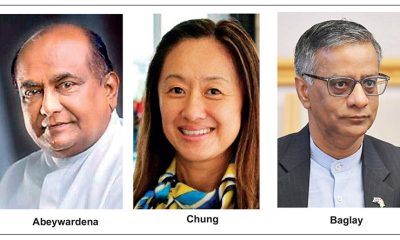
 Features5 days ago
Features5 days agoFinally, Mahinda Yapa sets the record straight
-
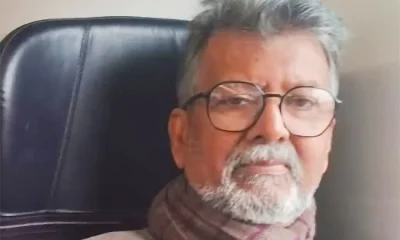
 News6 days ago
News6 days agoCyclone Ditwah leaves Sri Lanka’s biodiversity in ruins: Top scientist warns of unseen ecological disaster
-
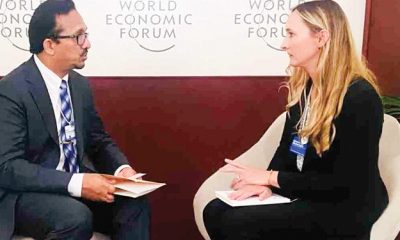
 Features5 days ago
Features5 days agoHandunnetti and Colonial Shackles of English in Sri Lanka
-
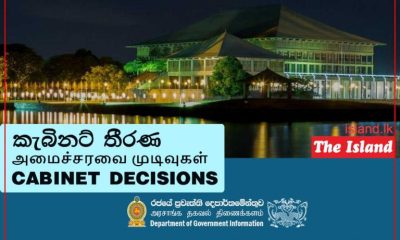
 Business4 days ago
Business4 days agoCabinet approves establishment of two 50 MW wind power stations in Mullikulum, Mannar region
-

 News7 days ago
News7 days agoJetstar to launch Australia’s only low-cost direct flights to Sri Lanka, with fares from just $315^
-
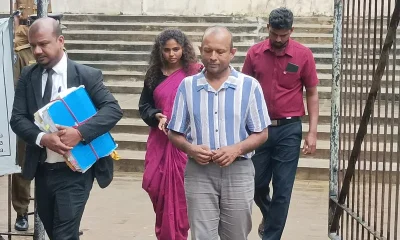
 News4 days ago
News4 days agoGota ordered to give court evidence of life threats
-
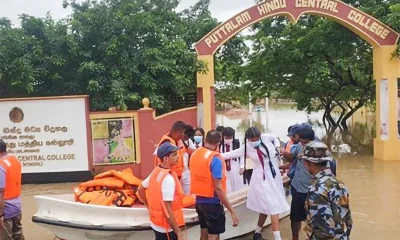
 Features6 days ago
Features6 days agoAn awakening: Revisiting education policy after Cyclone Ditwah
-

 Features4 days ago
Features4 days agoCliff and Hank recreate golden era of ‘The Young Ones’













